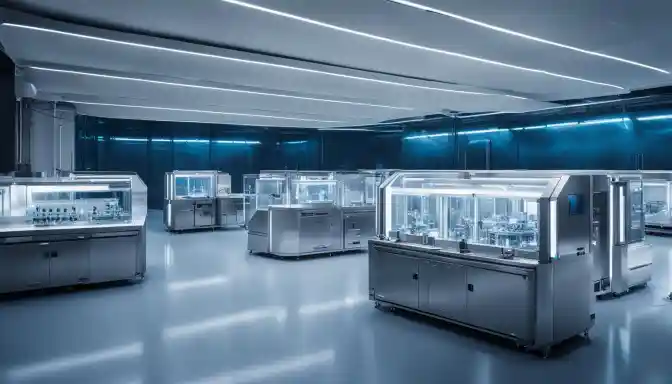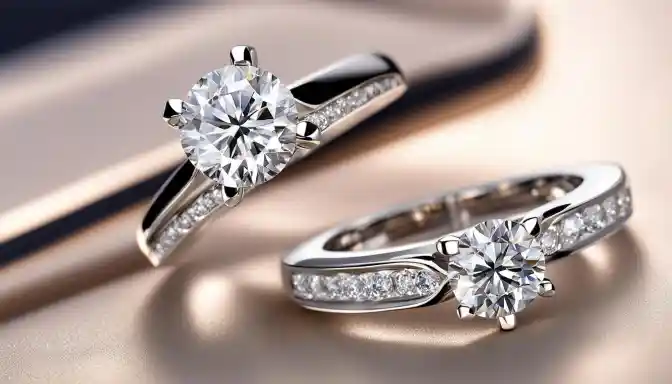Discover the brilliant world of lab-created diamonds, where ethical standards and remarkable savings collide. Engage in the allure of affordable lab diamonds that offer both a conscientious and cost-effective avenue for your most treasured jewelry pieces, including those all-important lab diamond engagement rings. Gone are the days when the quest for ethical diamonds meant exorbitant costs. Now, the cost of lab diamonds has significantly decreased, presenting you with an opportunity to own a stone that’s as beautiful and real as it is kind to your wallet and the world.
The sparkling allure of lab diamond jewelry extends beyond mere cost savings. As one of the diamond alternative savings, man-made diamonds offer you the chance to both uphold ethical values and embrace luxury. Whether you’re seeking the perfect engagement ring or a special piece to mark a momentous occasion, lab-created diamonds ensure that your precious investment is both environmentally responsible and stunningly gorgeous.
Key Takeaways
- Lab-created diamonds provide significant savings compared to their mined counterparts, ideal for those seeking ethical diamonds without the hefty price tag.
- The advancement in technology has made affordable lab diamonds more accessible, making luxury more attainable.
- With the lower cost of lab diamonds, you can opt for larger carats or more elaborate designs for your lab diamond jewelry.
- Choosing man-made diamonds reflects a commitment to sustainability, as they come with a reduced carbon footprint.
- Despite their savings, lab-created diamonds are real diamonds in every scientific aspect, backed by certification and appraisal.
- As ethical and diamond alternative savings continue to gain traction, lab diamonds lead the way in changing consumer behavior towards more responsible luxury.
Understanding Lab-Grown Diamonds: Quality and Production
The dawn of lab diamond innovation has provided a sustainable and ethical alternative to mined gemstones, offering high lab diamond quality with the guarantee of lab-created diamond certification. Embark on a journey to understand the science and craftsmanship behind these sparkling treasures.
The Science Behind Creating Lab Diamonds
Lab-grown gemstones, particularly diamonds, are the result of cutting-edge technology replicating the formidable conditions under which diamonds naturally form. Spanning years of research, scientists have perfected two main techniques: the High Pressure High Temperature (HPHT) process and the Chemical Vapor Deposition (CVD) process. The HPHT process mimics the natural geological conditions that produce diamonds deep within the Earth by using high temperatures and pressures to crystalize carbon into diamonds. In contrast, the CVD process involves a hydrocarbon gas mixture being deposited onto thin slices of diamond seeds, atom by atom, leading to the growth of the diamond layer by layer. This transformation is not just a marvel of lab diamond craftsmanship but also a testament to human ingenuity.

How Lab Diamonds Match Up to Mined Counterparts
Though born from the labor of machines and the minds of scientists, cultured diamonds bear a resemblance to mined diamonds so close that it baffles even the experts. To the naked eye, the similarities are indistinguishable, sharing the same sparkle, fire, and physical properties. It requires specialized equipment to tell them apart, thus highlighting the feats of lab diamond production that achieve a paralleled beauty.
The Range of Qualities Available in Lab Diamonds
Quality in diamonds is an orchestra of clarity, color, cut, and carat weight. Lab diamonds offer a spectrum that caters to all narratives, from stones with visible inclusions to those that are internally flawless. Whether you’re seeking affordability or opulence, lab diamonds can provide an array of quality levels suitable for every occasion and budget.
Certifications and Appraisals of Lab-Created Diamonds
Assurance in lab-created diamond quality doesn’t end when the stone leaves the laboratory. Esteemed institutions like the Gemological Institute of America (GIA) extend rigorous certification standards to lab-grown diamonds—standards usually reserved for their natural counterparts. These certifications serve as a pat on the back for lab diamond craftsmanship, ensuring each cultured diamond meets the high expectations expected within the industry.
Lab Diamond Savings: Balancing Affordability and Luxury
As you navigate the sparkling world of diamonds, modern technology has introduced the thrilling opportunity to experience the same magnificence at a fraction of the cost. Lab-grown diamonds epitomize the seamless blend of luxury and economics, offering you synthetic diamond savings that can verge on 60% less than their natural counterparts. This remarkable price difference opens the door to owning a piece of opulence without the traditional expense, redefining the notion of what is accessible in the realm of jewelry.
With a collective shift toward ethical diamond buying, you now have options that align with a conscience-driven lifestyle. These affordable diamond alternatives are not simply budget-friendly; they are a testament to advancements in eco-friendly diamond alternatives, boasting reduced carbon footprints and zero mining impact. The rise of the lab-created diamond market reflects a burgeoning trend where value goes beyond the tag—incorporating ethical gemstone choices and sustainable diamond choices into your lifestyle becomes seamless as you indulge in the larger, more exquisite pieces that lab diamonds afford.
When shopping for that special engagement ring or celebratory jewelry, the allure of lab-grown diamond value is undeniable. You are no longer confined by traditional constraints; the world of lab diamond shopping is rich with possibilities—from unique hues to rare cuts that challenge the imagination. As man-made gemstone options evolve, so too does the collective lab-grown diamond awareness. Choose to invest not just in a treasure that captures the eye, but in a future that embraces sustainability, transparency, and responsibility. Embrace the innovation that lab-created diamonds bring to the table, and let your choices reflect both your values and your refined taste.
FAQ
What are lab diamonds and how are they created?
Lab diamonds, also known as man-made or lab-created diamonds, are real diamonds produced in controlled environments using advanced technological processes like High Pressure High Temperature (HPHT) or Chemical Vapor Deposition (CVD). These methods replicate the natural conditions under which diamonds form in the Earth’s mantle, resulting in gems that are chemically, physically, and optically identical to mined diamonds.
Are lab diamonds really less expensive than natural diamonds?
Yes, lab diamonds typically cost 40-50% less than their natural counterparts. This significant price difference allows for substantial savings, especially on bigger-ticket items like engagement rings, without sacrificing the diamond’s quality or beauty. As lab diamond technology has improved and production has increased, prices have become even more affordable.
How do lab diamonds compare to mined diamonds in terms of quality?
Lab diamonds match up to mined diamonds in quality, as they share the same chemical and optical properties, including hardness. The quality range is comparable as well, with options from more affordable, slightly included stones, to high-end, internally flawless diamonds. They are graded and certified using the same criteria applied to mined diamonds.
Are lab diamonds certified and appraised like mined diamonds?
Yes, lab diamonds undergo the same rigorous certification and appraisal process as mined diamonds. Institutions like the GIA provide grading reports that evaluate a lab diamond’s cut, color, clarity, and carat weight. These certifications ensure that consumers receive an accurate assessment of their lab diamond’s quality.
Can lab diamonds be considered eco-friendly and ethical?
Lab diamonds are considered more eco-friendly and ethical compared to mined diamonds. They require less energy, produce fewer carbon emissions, and don’t have the same detrimental earth-moving effects associated with traditional mining. Additionally, lab diamond production avoids the social conflicts and labor concerns linked to diamond mining regions.
How do the environmental impacts of lab diamonds and mined diamonds differ?
Lab diamonds have a significantly lower environmental impact than mined diamonds. They result in fewer carbon emissions, require less water, and do not disturb natural ecosystems through mining practices. This makes lab diamonds a more sustainable choice for consumers concerned about their environmental footprint.
Are there unique design options available with lab diamonds?
Absolutely. Affordability often translates to larger or higher-quality lab diamonds for the same budget, which can open up possibilities for more unique and intricate designs. Additionally, lab diamond technology can create colors and cuts that are less common or more expensive when found in natural diamonds, offering further personalization for consumers.
Is investing in lab diamonds a good idea?
While lab diamonds maintain their value as cherished keepsakes and symbols of affection, they are currently not considered investment-grade assets like some rare natural diamonds. However, they represent a wise investment in terms of personal value and are a cost-effective alternative for high-quality diamond jewelry.
How can I be sure that the lab diamond I am buying is real?
Ensuring the authenticity of a lab diamond involves purchasing from reputable sellers who provide certification from recognized grading institutions like the GIA or IGI. These certifications verify that the gems are indeed real diamonds, lab-grown with the same properties as mined ones.
Why is there a growing consumer base for lab diamonds?
The popularity of lab diamonds is on the rise due to their affordable pricing, ethical production methods, and reduced environmental impact, which align with increasing consumer demand for transparency, sustainability, and social responsibility in their purchases, particularly among younger generations.






